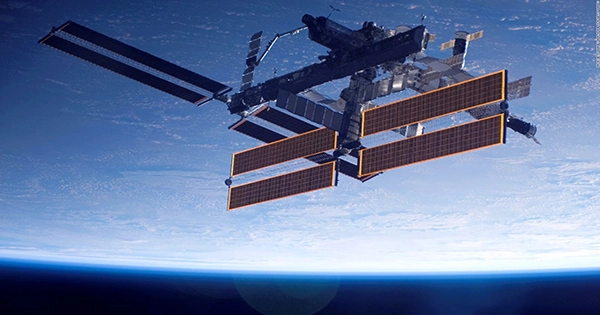Direct photochemical reactions, researchers discovered, might generate the oxygen and hydrogen humans require for long-term colonization of Mars or the Moon.
To extract oxygen from water, the International Space Station (ISS) uses photovoltaic-powered water electrolyzers. However, the two-stage process of converting sunlight into energy and then employing electricity in water electrolysis is expensive.
According to research published this week, the Oxygen Generator Assembly (OGA), which relies on electrolysis, consumes around 1.5kW of the 4.6kW energy budget of the Environmental Control and Life Support System on the ISS. According to the study published in Nature Communications, the strategy was a dead end in terms of future space exploration and habitation.
In addition to the significant energy requirement, the OGA and the Carbon Dioxide Reduction Assembly “currently in place on the ISS bear the challenge of being notoriously cumbersome and prone to breakdowns due to obsolete, inefficient, or aging compartments,” according to the report.
As an alternative, lead researcher Katharina Brinkert, assistant professor of catalysis at the University of Warwick, evaluated the viability of photoelectrochemical (PEC) devices to improve long-term survival prospects.
PEC devices use semiconductor materials to convert solar energy directly to chemical energy, producing hydrogen and oxygen without the need for intermediate electricity production. Technology is the topic of significant research on Earth since it has the potential to help with the problem of sustainable energy, but its potential in space has yet to be examined.
“This work seeks to establish the theoretical foundations for the application of PEC devices in habitats on the Moon and Mars, and it provides the first foray into exploring the feasibility of using them for oxygen production and carbon dioxide recycling,” Brinkert wrote in the paper.
The researchers came to the conclusion that it was doable, but with significant restrictions.
“Although high long-term efficiencies and power densities of PEC devices are still integral parts of ongoing terrestrial research efforts, we have shown that the application of these devices could go beyond Earth and potentially contribute to the realization of human space exploration,” the paper stated.
The study also looked into whether PEC devices could be constructed in an extraterrestrial settlement using In-Situ Resource Utilization (ISRU), which refers to what you can discover where you’ve landed.
“The device can be built using a variety of semiconductors and electrocatalyst materials available on the Moon and Mars, and the required materials can eventually be produced via ISRU.” Furthermore, we have previously proved that PEC devices can perform efficiently in microgravity, and our theoretical research implies that it can be scaled up appropriately,” according to the paper.
















